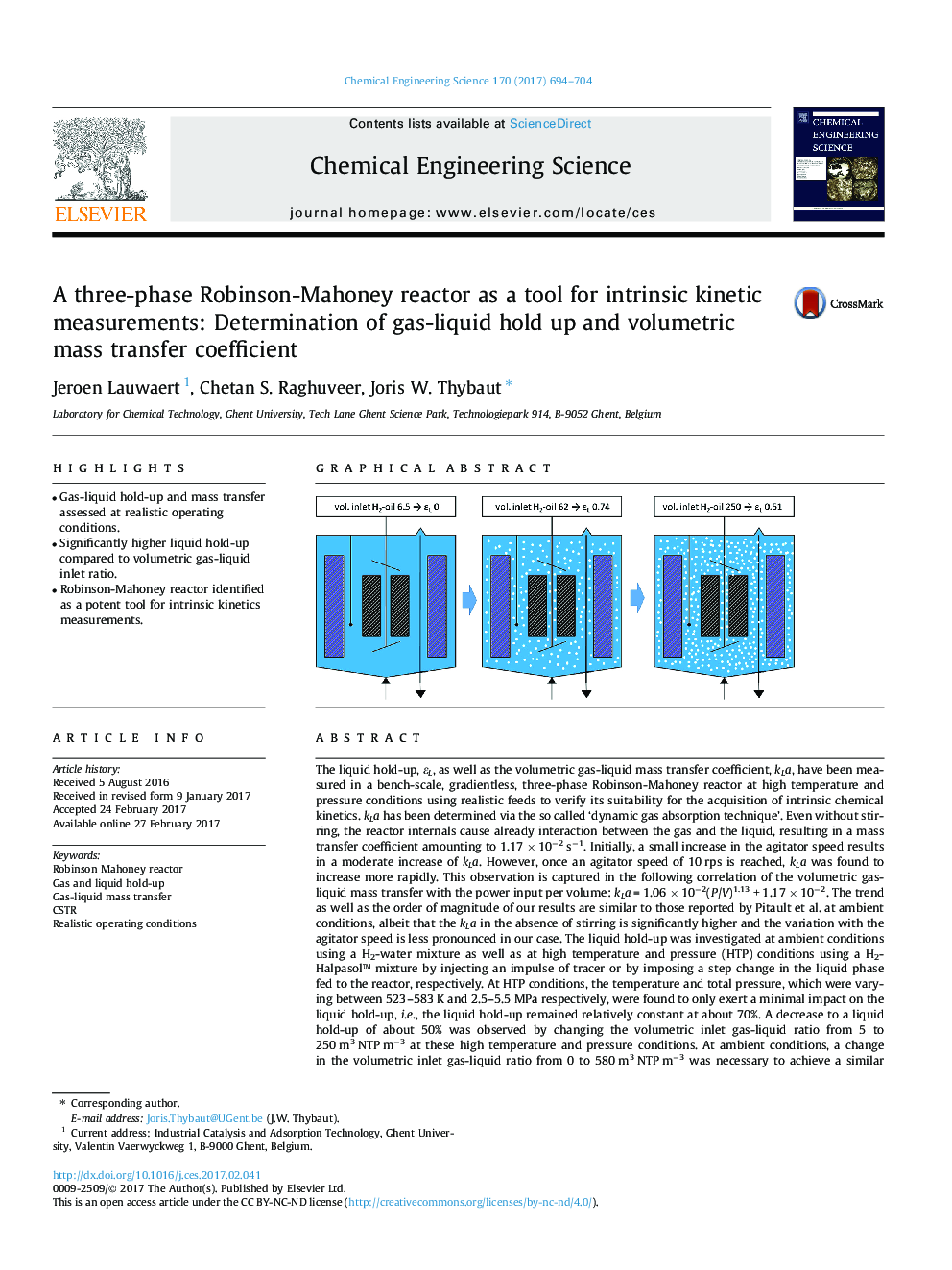| کد مقاله | کد نشریه | سال انتشار | مقاله انگلیسی | نسخه تمام متن |
|---|---|---|---|---|
| 6467320 | 1423249 | 2017 | 11 صفحه PDF | دانلود رایگان |

- Gas-liquid hold-up and mass transfer assessed at realistic operating conditions.
- Significantly higher liquid hold-up compared to volumetric gas-liquid inlet ratio.
- Robinson-Mahoney reactor identified as a potent tool for intrinsic kinetics measurements.
The liquid hold-up, εL, as well as the volumetric gas-liquid mass transfer coefficient, kLa, have been measured in a bench-scale, gradientless, three-phase Robinson-Mahoney reactor at high temperature and pressure conditions using realistic feeds to verify its suitability for the acquisition of intrinsic chemical kinetics. kLa has been determined via the so called 'dynamic gas absorption technique'. Even without stirring, the reactor internals cause already interaction between the gas and the liquid, resulting in a mass transfer coefficient amounting to 1.17 Ã 10â2 sâ1. Initially, a small increase in the agitator speed results in a moderate increase of kLa. However, once an agitator speed of 10 rps is reached, kLa was found to increase more rapidly. This observation is captured in the following correlation of the volumetric gas-liquid mass transfer with the power input per volume: kLa = 1.06 Ã 10â2(P/V)1.13 + 1.17 Ã 10â2. The trend as well as the order of magnitude of our results are similar to those reported by Pitault et al. at ambient conditions, albeit that the kLa in the absence of stirring is significantly higher and the variation with the agitator speed is less pronounced in our case. The liquid hold-up was investigated at ambient conditions using a H2-water mixture as well as at high temperature and pressure (HTP) conditions using a H2-Halpasol⢠mixture by injecting an impulse of tracer or by imposing a step change in the liquid phase fed to the reactor, respectively. At HTP conditions, the temperature and total pressure, which were varying between 523-583 K and 2.5-5.5 MPa respectively, were found to only exert a minimal impact on the liquid hold-up, i.e., the liquid hold-up remained relatively constant at about 70%. A decrease to a liquid hold-up of about 50% was observed by changing the volumetric inlet gas-liquid ratio from 5 to 250 m3 NTP mâ3 at these high temperature and pressure conditions. At ambient conditions, a change in the volumetric inlet gas-liquid ratio from 0 to 580 m3 NTP mâ3 was necessary to achieve a similar reduction in liquid hold-up. This difference was attributed to differences in surface tension of the fluids used rather than in operating conditions such as temperature and total pressure. The experimentally observed liquid hold-up was higher compared to that obtained from vapour-liquid equilibrium calculations at similar volumetric inlet gas liquid ratio. The evolution of the liquid hold-up with increasing volumetric inlet gas-liquid ratio suggests the phase within the reactor changes from completely filled liquid with gas bubbles dispersed at low inlet gas-liquid ratio and potentially to continuous gas phase with entrained liquid droplets at very high inlet gas-liquid ratio.
196
Journal: Chemical Engineering Science - Volume 170, 12 October 2017, Pages 694-704